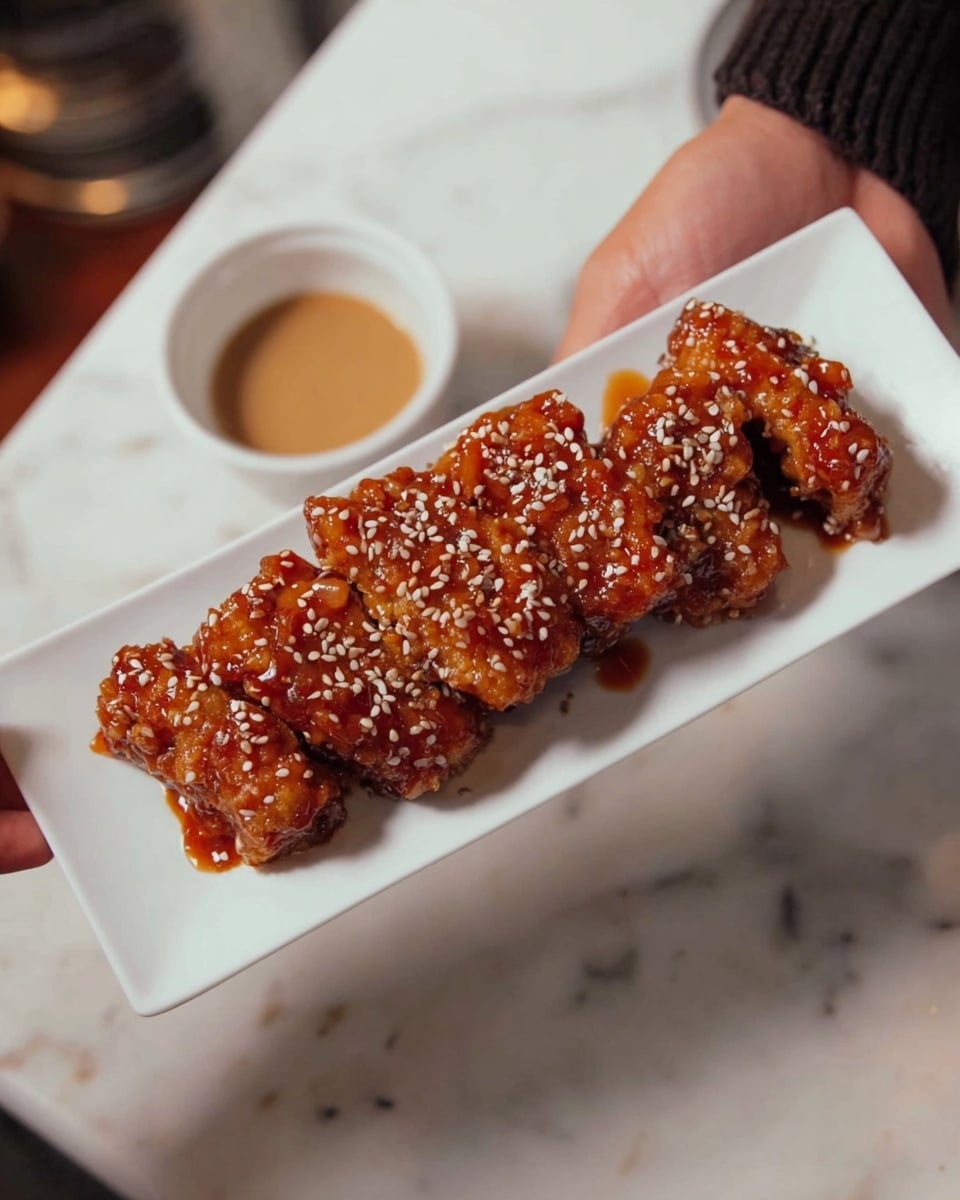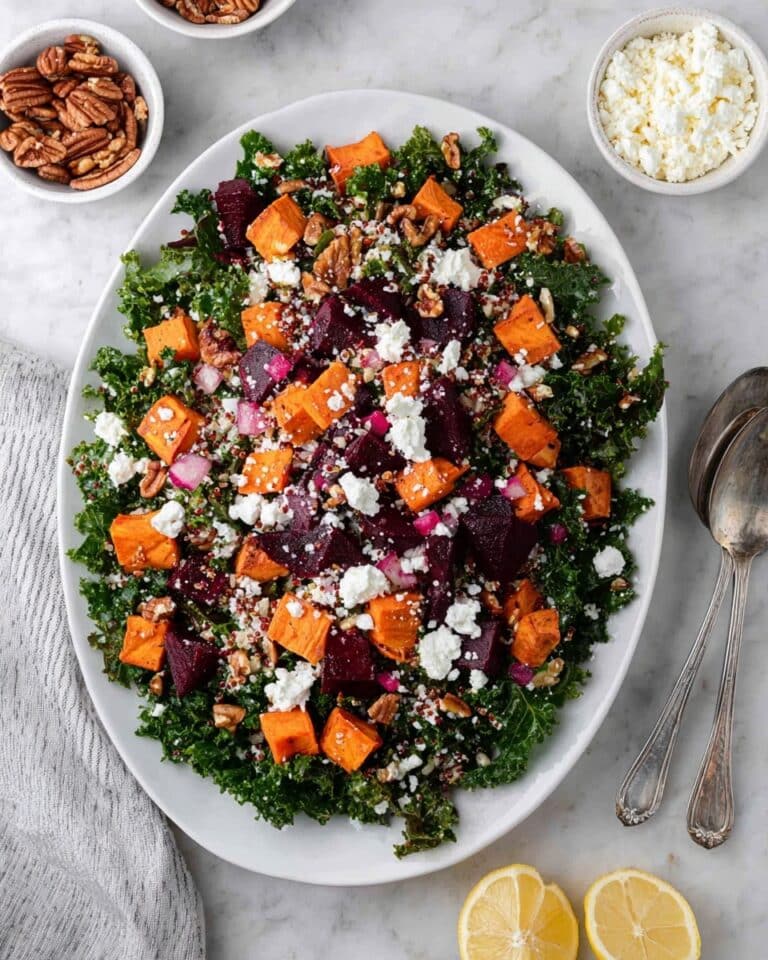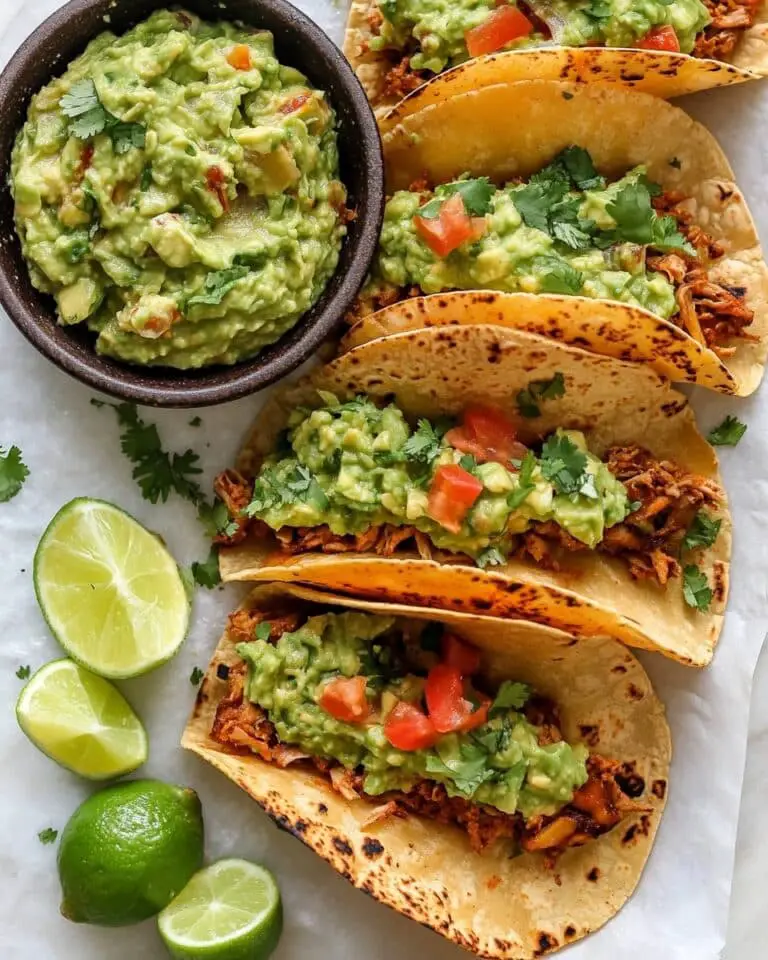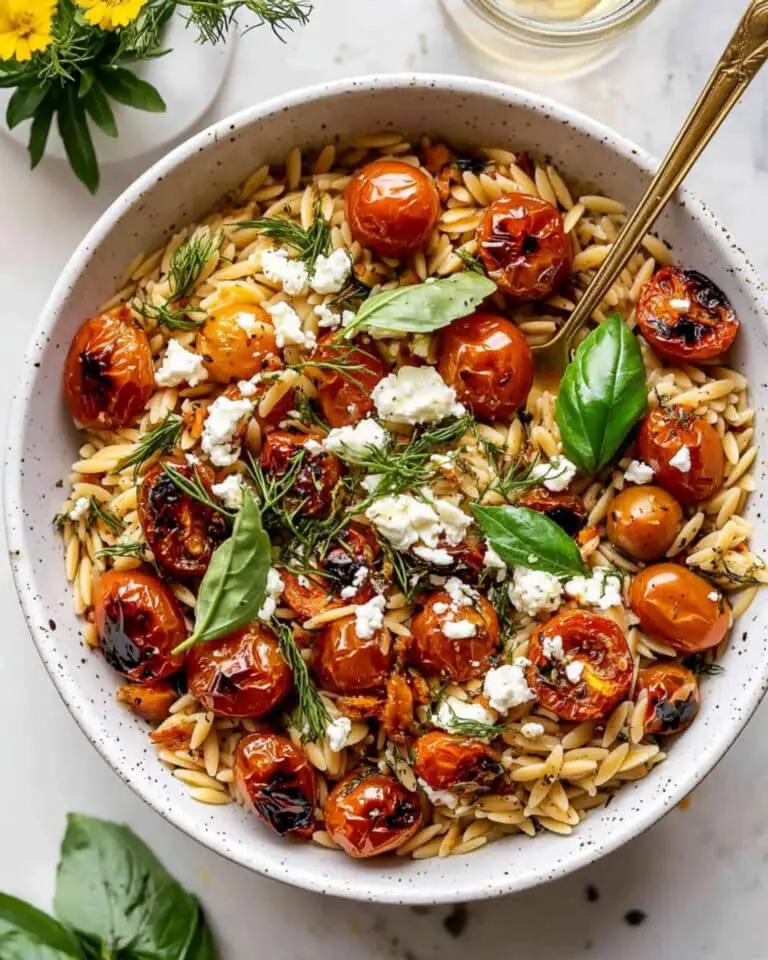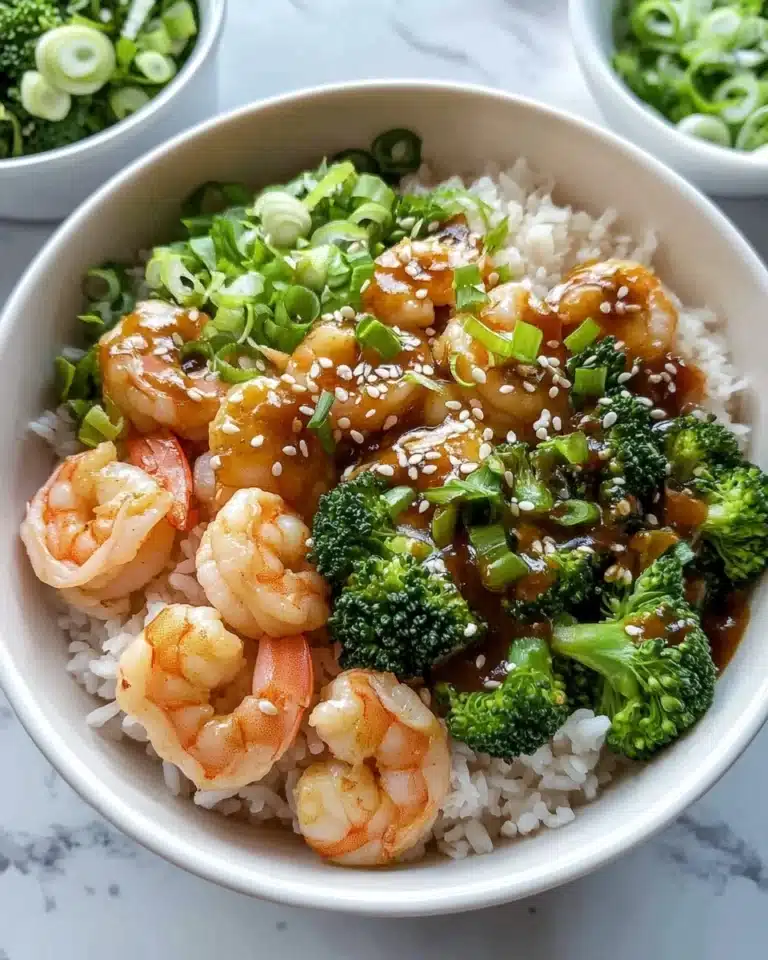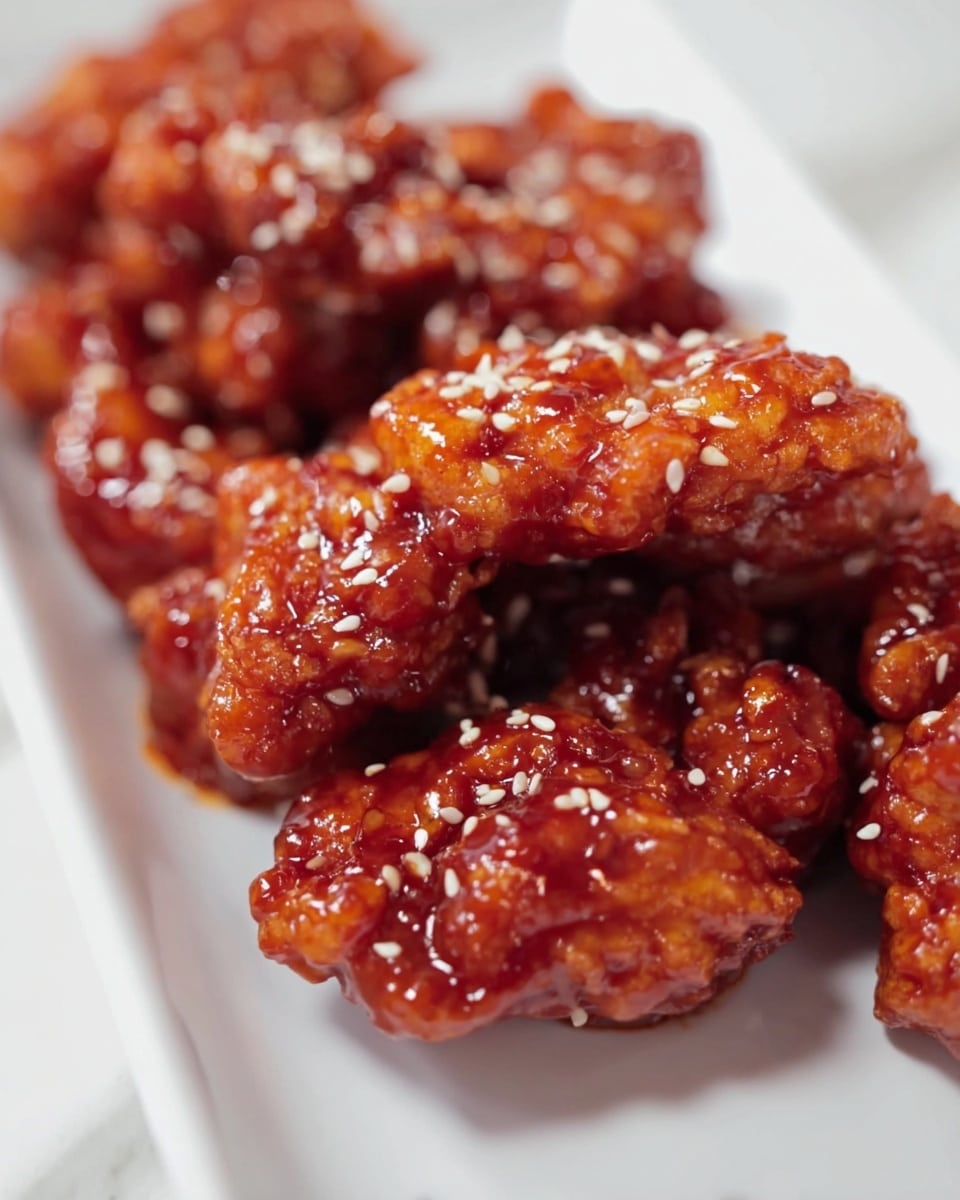
If you’re craving a dish that’s crispy, saucy, and absolutely bursting with flavor, you’re in the right place. I’m excited to share my go-to Sweet and Spicy Korean Fried Chicken (Yangnyeom Chicken) Recipe that’s become an instant favorite in my kitchen. This recipe hits every note: crunchy, sticky, sweet, spicy—you name it. When I first tried making Yangnyeom Chicken, I was amazed at how easy it was to nail those iconic flavors right at home. Stick with me and I’ll walk you through how to make it perfectly every time!
Why You’ll Love This Recipe
- Perfect Balance of Flavors: The sweet and spicy sauce brings out the best in each bite without overpowering the crispiness.
- Double Frying for Ultimate Crunch: You’ll get that signature crunch that stays crispy even after tossing it in sauce.
- Simple Ingredients, Big Impact: Most ingredients are pantry staples or easy to find, making it approachable for any home cook.
- Versatile for Any Occasion: Whether it’s game night, dinner parties, or a weekend treat, this chicken always steals the show.
Ingredients You’ll Need
The magic of this Sweet and Spicy Korean Fried Chicken (Yangnyeom Chicken) comes down to fresh chicken, the right starch for crispiness, and a sauce that balances heat and sweetness just right. I always recommend using good-quality chicken thighs because they stay juicy and tender after double frying.
- Vegetable or Canola Oil: Neutral oils with high smoke points are perfect for deep frying without burning.
- Chicken Thigh Fillet: Skinless and fat trimmed, thigh meat offers more flavor and tenderness than breasts.
- Salt: Simple seasoning to enhance the chicken’s natural taste.
- Pepper: Adds a touch of heat that complements the sweet sauce.
- Garlic: I use a good amount for that aromatic punch, both in the chicken and the sauce.
- Egg: Helps the batter stick to the chicken for that perfect crisp.
- Potato Starch: The secret to extra crunch; it fries up lighter and crispier than regular flour in my experience.
- Water: Gradually added to achieve the right batter consistency—not too thick or runny.
- Gochujang: This Korean chili paste brings in beautiful heat and umami depth.
- Soy Sauce: Adds saltiness and balances the sweetness of the sauce.
- Ketchup: Surprising but essential for tangy sweetness and color.
- Sugar: Sweetness that helps the sauce caramelize just a bit when heated.
- Corn Syrup: Keeps everything glossy and sticky, making that sauce irresistible.
Variations
I love playing around with this Sweet and Spicy Korean Fried Chicken (Yangnyeom Chicken) Recipe to match the occasion or mood. Whether you crave extra heat or want a less sweet version, it’s all about tweaking the sauce and spices to your taste.
- Extra Spicy: I sometimes add a pinch of red chili flakes or extra gochujang for a serious kick that my spice-loving friends rave about.
- Less Sweet: Reducing the sugar and corn syrup balances the sauce for those who prefer a milder glaze.
- Gluten-Free: Use potato starch exclusively and tamari instead of soy sauce, so it’s safe for gluten-sensitive family members.
- Oven-Baked Version: For a lighter take, you can bake the chicken coated in starch and sauce, though I think you’ll miss that delectable crunch.
How to Make Sweet and Spicy Korean Fried Chicken (Yangnyeom Chicken) Recipe
Step 1: Prep and Brine Your Chicken
First things first, chop your chicken thigh fillets into bite-sized pieces—this makes them perfect for snacking or serving family-style. Toss the chicken with salt, pepper, garlic, and egg, then pop it into the fridge to brine for at least an hour. I usually let it sit closer to two hours if I have time, and it really helps the seasoning soak in, making the chicken juicy and flavorful all the way through.
Step 2: Make the Batter with Potato Starch and Water
After brining, gradually stir potato starch and water into the chicken until it’s coated in a batter that’s just the right consistency. I like mine to be thick enough to coat well but not so thick that it clumps up. The trick here is to add water slowly — you want to be able to lift the bowl without the batter sliding off like a runny sauce, but it shouldn’t be rock-solid either.
Step 3: Double Fry for Crispy Perfection
This is where the magic happens. Heat your oil to about 350°F and fry your chicken in batches for 5 to 6 minutes each. Don’t overcrowd the pot or the temperature will drop, and you’ll lose that crispiness. After the first fry, let the chicken rest for a few minutes, then gently smash each piece to create little air pockets—this step makes the second fry extra crispy. Crank the heat up to 375°F and fry the chicken again for about 2 minutes. Trust me, the double frying is worth the extra step!
Step 4: Cocktail Your Sweet and Spicy Sauce
While the chicken cools—just a bit!—combine gochujang, ketchup, soy sauce, sugar, garlic, and corn syrup in a small pot. Simmer on low for a couple of minutes so the flavors meld and the sauce thickens slightly. Once ready, toss the crispy fried chicken in the sauce until every piece is beautifully coated in that sticky, flavorful glaze.
Step 5: Serve and Enjoy
Plate it up, sprinkle with some sesame seeds (optional but I swear it makes it look restaurant-quality), and dig in while it’s hot and crispy. This Sweet and Spicy Korean Fried Chicken (Yangnyeom Chicken) Recipe pairs perfectly with cold drinks or steamed rice.
Pro Tips for Making Sweet and Spicy Korean Fried Chicken (Yangnyeom Chicken) Recipe
- Use Thigh Meat: I learned early on that thighs stay juicy and tender much better than breasts, especially with double frying.
- Don’t Skip the Double Fry: It may take extra time, but you’ll get a crunch that lasts through that thick sauce.
- Monitor Oil Temperature: Keeping the oil between 350°F and 375°F prevents soggy chicken and burnt coating.
- Build Sauce Flavor Slowly: Simmer the sauce gently to avoid burning the sugar and to marry all the sweet-spicy flavors perfectly.
How to Serve Sweet and Spicy Korean Fried Chicken (Yangnyeom Chicken) Recipe
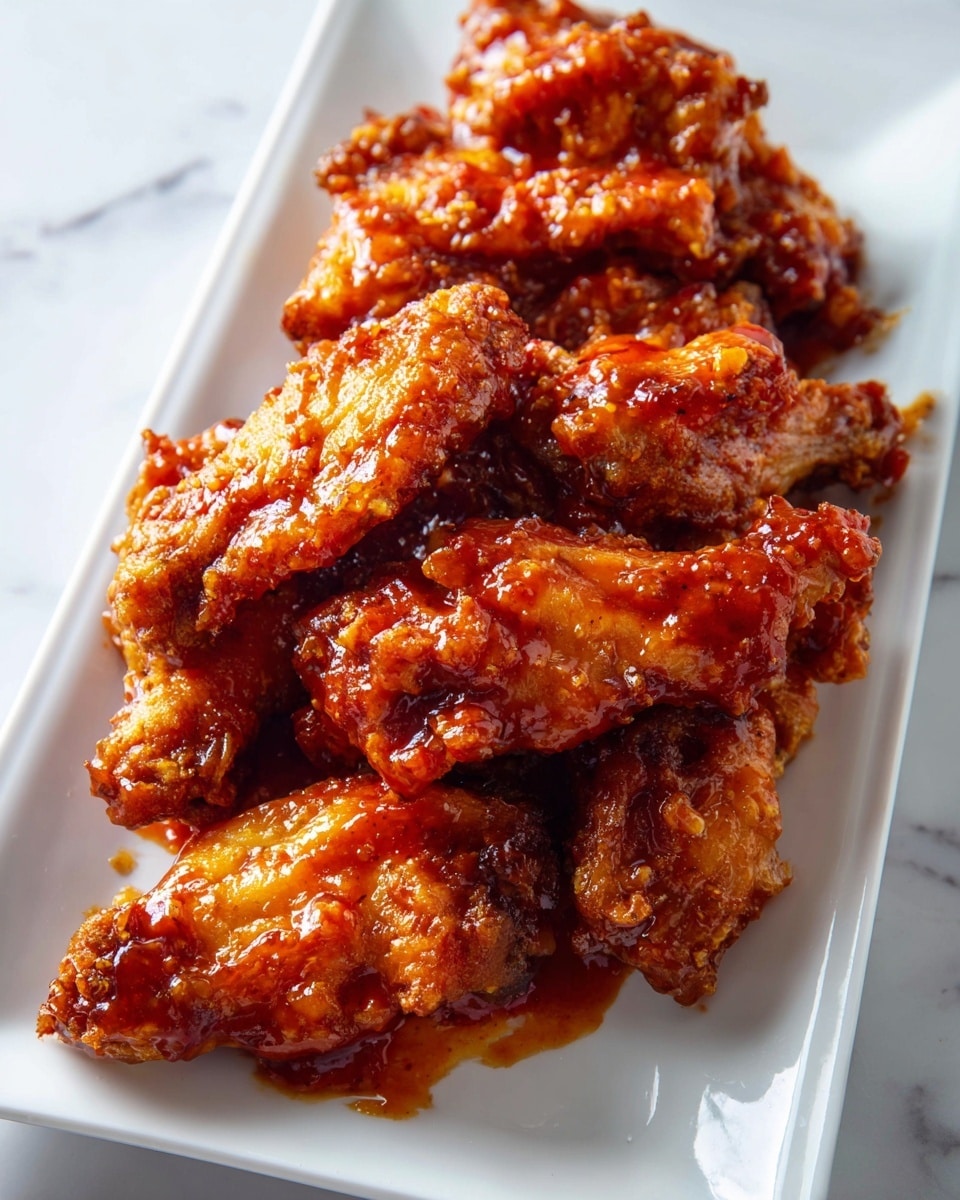
Garnishes
I love finishing this dish with a sprinkling of toasted white sesame seeds and a few chopped scallions. It adds a fresh crunch and a pop of color that makes the chicken even more inviting. Sometimes, I even toss in some thinly sliced pickled radishes on the side to brighten up the rich, sticky chicken.
Side Dishes
This chicken pairs wonderfully with classic Korean sides like a simple cucumber salad, kimchi, or steamed rice to help soak up all the sauce. For a casual meal, my family loves having some crispy fries or even a fresh slaw on the side to balance the spice and sweetness.
Creative Ways to Present
For parties, I like to arrange the Yangnyeom Chicken bites on a large platter surrounded by colorful veggies and dipping sauces like ranch or spicy mayo. Sometimes, I make mini sliders using Korean fried chicken and pickled veggies on soft buns — it’s always a crowd-pleaser!
Make Ahead and Storage
Storing Leftovers
Leftover chicken tastes great the next day, though it loses a bit of that initial crunch. I keep mine in an airtight container in the fridge for up to 3 days. To maintain some crispiness, I let the chicken cool completely before storing to avoid sogginess.
Freezing
I’ve frozen cooked and sauced chicken successfully by first flash-freezing the pieces on a baking sheet, then transferring them to freezer bags. This way, the chicken pieces won’t stick together, and I can reheat only what I need. Frozen chicken keeps well for up to 2 months.
Reheating
To reheat, I find that warming the chicken in the oven at 375°F for about 10 minutes brings back some crispness better than microwaving, which tends to make the coating soggy. If frozen, thaw overnight in the fridge before reheating.
FAQs
-
Can I use chicken breast instead of thigh for this recipe?
You can use chicken breast, but I recommend pounding it to an even thickness to prevent drying out. Thighs stay juicier and are more forgiving when double fried, which is why I prefer them.
-
What if I don’t have gochujang?
Gochujang is key for authentic flavor, but in a pinch, you can substitute with a mix of chili paste and a touch of miso paste for umami. It won’t be exactly the same, but you’ll still have a delicious spicy-sweet sauce.
- Why do I need to double fry the chicken?
Double frying removes excess moisture and creates a sturdier crust that stays crispy even after coating with sauce—something single frying just can’t achieve. It’s a game changer for the texture!
- Can I make this recipe less spicy?
Absolutely! Just reduce the amount of gochujang and skip any extra chili flakes. The sauce will still be flavorful thanks to the balance of sweet and savory ingredients.
Final Thoughts
This Sweet and Spicy Korean Fried Chicken (Yangnyeom Chicken) Recipe has a special place in my heart and on my dinner table. It’s one of those dishes where every bite feels like a little party—crispy, saucy, and packed with flavor. I’m always thrilled when friends tell me they can’t stop eating it, and I know you’ll love making it at home for your crew too. Dive in, have fun with the sauce, and don’t be afraid to savor every sticky, spicy, crispy bite!
Print
Sweet and Spicy Korean Fried Chicken (Yangnyeom Chicken) Recipe
- Prep Time: 60 min
- Cook Time: 60 min
- Total Time: 120 min
- Yield: 3 servings
- Category: Main Course
- Method: Frying
- Cuisine: Korean
Description
Sweet and Spicy Korean Fried Chicken, also known as Yangnyeom Chicken, is a crispy double-fried chicken coated in a flavorful, sticky sauce made from gochujang, ketchup, soy sauce, and sweeteners. This popular Korean dish balances heat, sweetness, and umami, delivering a finger-licking bite-size treat perfect for sharing.
Ingredients
Chicken and Marinade
- 500 grams Chicken Thigh Fillet (skin and fat removed)
- 1/2 tsp Salt
- Pepper, to taste
- 1 tbsp Garlic, minced
- 1 pc Egg
Batter
- 1 cup Potato Starch
- Water, gradually added to adjust batter consistency
Frying
- Vegetable or Canola Oil (for frying)
Sauce
- 3 tbsp Gochujang (Korean chili paste)
- 1 1/2 tbsp Soy Sauce
- 6 tbsp Ketchup
- 3 tbsp Sugar
- 1 1/2 tbsp Garlic, minced
- 6 tbsp Corn Syrup
Garnish
- Sesame Seeds (for topping)
Instructions
- Prepare the chicken: Chop the chicken thighs into bite-sized pieces, ensuring uniform size for even cooking.
- Season and brine: In a bowl, combine the chicken pieces with salt, pepper, minced garlic, and egg. Mix thoroughly and let the chicken marinate in the refrigerator for at least one hour to allow flavors to penetrate.
- Make the batter: After brining, gradually add water to the potato starch-coated chicken to form a batter. The consistency should be just right: not too thick or runny, enabling good coating without dripping excessively.
- First fry: Heat vegetable or canola oil to 350°F (175°C). Fry the chicken pieces in batches for 5-6 minutes until cooked through and lightly golden. Remove and let rest for a couple of minutes.
- Smash the chicken: Gently smash the fried chicken pieces to create air holes within the crust; this step helps achieve extra crispiness on the second fry.
- Second fry: Increase oil temperature to 375°F (190°C). Return chicken pieces to the hot oil and fry for an additional 2 minutes, creating a super-crispy exterior. Remove and drain on a wire rack to cool slightly.
- Prepare the sauce: In a saucepan, combine gochujang, ketchup, soy sauce, sugar, minced garlic, and corn syrup. Simmer gently over low heat for a few minutes until the sauce thickens slightly and flavors meld.
- Coat the chicken: Quickly toss the double-fried chicken pieces in the warm sauce, ensuring even coverage.
- Serve and garnish: Plate the chicken and sprinkle with sesame seeds. Serve immediately to enjoy the crisp texture with the sticky, sweet, and spicy sauce.
Notes
- Korean Fried Chicken is known for its double frying technique that results in an ultra-crispy crust.
- The sweet and spicy sauce perfectly complements the savory fried chicken, making it addictive and flavorful.
- Adjust the amount of gochujang and sugar according to your preferred spice and sweetness levels.
- Use a wire rack after frying to keep the chicken crisp by draining excess oil and preventing sogginess.
- This dish is best served fresh and hot for maximum crispness and flavor contrast.
Nutrition
- Serving Size: 1 serving (approx. 200g)
- Calories: 560 kcal
- Sugar: 15 g
- Sodium: 900 mg
- Fat: 30 g
- Saturated Fat: 6 g
- Unsaturated Fat: 22 g
- Trans Fat: 0 g
- Carbohydrates: 45 g
- Fiber: 2 g
- Protein: 35 g
- Cholesterol: 110 mg

